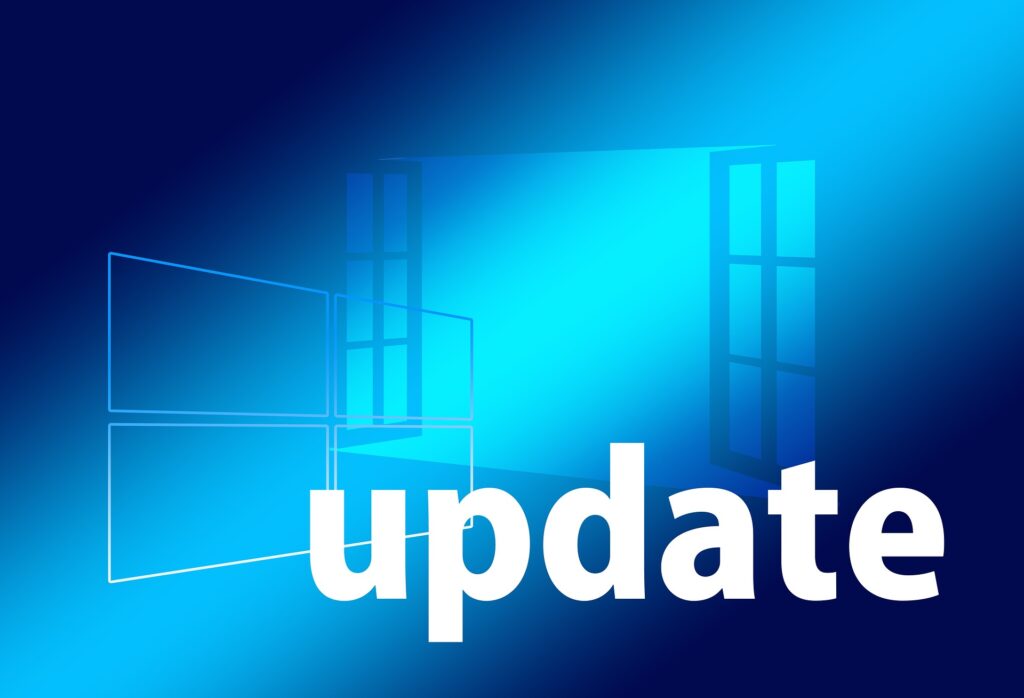
You’re working on your computer, it’s halfway through the second week of the month, and all of a sudden, your PC starts to slow down and lag. Unsure what is going on, you plod forward, hoping whatever is causing the problem will correct itself eventually. After some minutes go by, a notification pops up in the corner letting you know that updates have been installed and the PC will reboot in the evening. Okay, you think. That explains it, things should be good now that it’s done, right? At the end of the day, you close your laptop lid and assume all will be well tomorrow.
The next morning you open up your PC, having forgotten all about the previous day’s issues and alert. But something doesn’t seem right. Certain websites aren’t loading properly. Some documents seem to have trouble saving. Emails aren’t sending. You click the start menu only to find that pernicious little orange dot on the power button is still there! The computer didn’t reboot like it said it would! You then have to reboot it yourself to get things working, and finishing the updates adds more time and causes much more thumb-twiddling than you’d prefer.
What happened? Well, in this case, when you closed your laptop lid, it either put the computer to sleep or into hibernation, which prevented the scheduled reboot from taking place. As much as Microsoft tries to make updates automatic and not affect your work significantly, there are some fundamental obstacles in the way preventing those updates from occurring. All well and good when it happens to you, but what about when it happens to your employees who are less familiar with their technology? What if it happens to your remote employee who doesn’t know a lick about computers other than what you’ve taught them? Will they know what to do?
When dealing with workstation updates in a business, the benefits of being able to monitor, manage and deploy those updates remotely are many. Foremost, you don’t have to rely on your employees to let you know when they’re having trouble. Daily scans will tell you if a PC is pending a reboot, hasn’t checked for updates in a while or is having some other issue preventing updates from occurring properly.
You can also schedule updates to occur at a certain time on a certain day, overriding the automatic process in the Windows operating system and giving you more control. You can create an SOP where all your users make sure to leave their PCs on and connected to the internet on the third Thursday of the month, for example, and have all the updates run at that time.
Complimentary configuration options, such as changing power settings on a PC so that it doesn’t go to sleep when you close the lid, can improve the efficacy of your update plan as well, and can be applied with scripts through the remote management tool so you don’t even need to tell the user anything. You can make sure your PCs are awake to install the updates when you tell it to, and you can tell the PC to reboot automatically even if someone left themselves logged in.
When dealing with Windows servers, managed updates become even more useful. Not only can you schedule those updates to apply overnight, you can specifically time them so they don’t interfere with backups, antivirus scans, cleanup tasks or other tasks that usually run overnight. The precision with which you can schedule your updates ensures that you can minimize the impact of downtime even if you have third shift staff working overnight.
On top of all this, Microsoft includes manufacturer updates for the major PC manufacturers such as HP and Dell in their update catalog, so not only will your machines get the Windows Updates automatically, they’ll also receive the most important firmware, driver, BIOS and other updates from the manufacturer of their PC. No longer will you need to worry about running HP Support Assistant or Dell SupportAssist on modern PCs every few months, keeping them only for diagnostics and uncommon situations where a needed update hasn’t made it to the Microsoft catalog yet.
As you can see, managed workstation updates can take a lot of the headache and anxiety out of having a team on PCs. It’s just one aspect of remote IT monitoring and management, but a vital one that should not be overlooked, especially if you have a team spread across many locations working remotely. Periodic reviews of the managed configuration can help you find areas of opportunity for education and performance improvement in terms of users that aren’t following SOP or aren’t rebooting their PCs manually when required.
Are you interested in learning more about how managed workstation updates can help your company? Vermont Panurgy provides remote workstation update and review services for businesses of all shapes and sizes, and we would be happy to have a conversation with you to see if it’s a fit for you too. Give us a call at 1-802-658-7788 and press 2 to speak to one of our sales representatives and learn more!